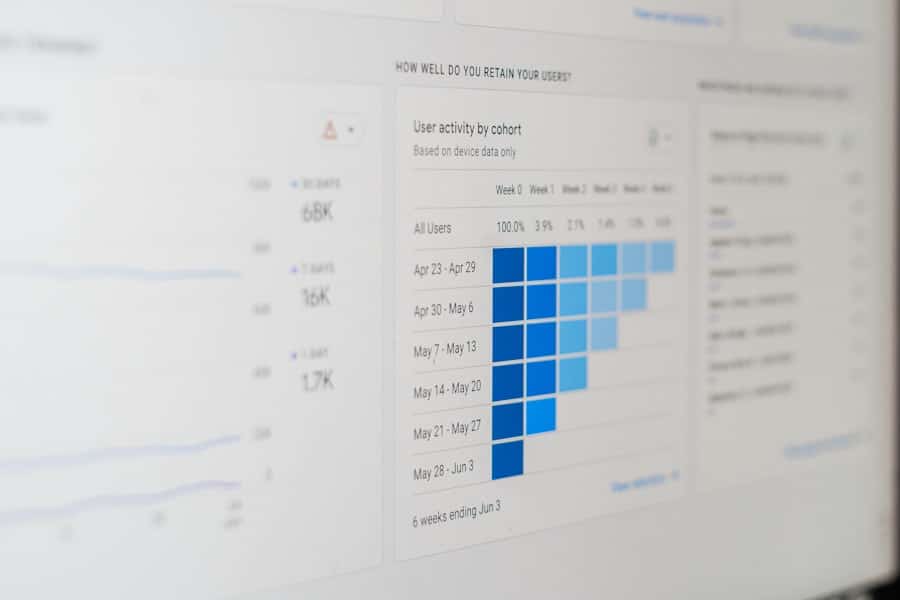The integration of artificial intelligence (AI) into payroll and expense management systems marks a significant evolution in how organizations handle financial operations. Traditionally, payroll processing and expense management have been labor-intensive tasks, often fraught with errors and inefficiencies. However, the advent of AI technologies has transformed these processes, enabling businesses to automate routine tasks, enhance accuracy, and improve overall efficiency.
By leveraging machine learning algorithms and data analytics, organizations can streamline their payroll and expense management systems, allowing for more strategic decision-making and resource allocation. AI’s role in payroll and expense management extends beyond mere automation; it encompasses predictive analytics, real-time data processing, and enhanced compliance measures. As companies increasingly adopt AI-driven solutions, they are discovering the potential for significant cost savings and improved employee satisfaction.
The ability to process vast amounts of data quickly and accurately allows organizations to focus on strategic initiatives rather than getting bogged down in administrative tasks. This article delves into the various ways AI is reshaping payroll and expense management, highlighting its benefits, challenges, and future trends.
Key Takeaways
- AI in payroll and expense management is revolutionizing the way businesses handle financial processes, offering increased efficiency and accuracy.
- AI streamlines payroll processes by automating repetitive tasks, reducing errors, and providing real-time insights into financial data.
- Using AI for expense management brings benefits such as improved accuracy, fraud detection, and faster reimbursement processes.
- AI plays a crucial role in ensuring compliance with regulations and accuracy in financial reporting, reducing the risk of costly errors.
- AI has a significant impact on employee experience and productivity by simplifying processes, reducing administrative burden, and providing valuable insights into financial data.
How AI Streamlines Payroll Processes
AI streamlines payroll processes by automating repetitive tasks that have historically required significant human intervention. For instance, AI-powered systems can automatically calculate wages based on hours worked, overtime, and deductions, significantly reducing the time spent on payroll preparation. These systems can also integrate with time-tracking software to ensure that employee hours are accurately recorded and processed.
By minimizing manual data entry, organizations can reduce the risk of human error, which is a common issue in traditional payroll systems. Moreover, AI can enhance payroll accuracy through advanced data validation techniques. Machine learning algorithms can analyze historical payroll data to identify patterns and anomalies, flagging potential discrepancies for review.
This proactive approach not only ensures that employees are paid correctly but also helps organizations avoid costly penalties associated with payroll errors. Additionally, AI can facilitate real-time reporting, allowing HR departments to access up-to-date payroll information at any time. This capability enables better financial planning and forecasting, as organizations can quickly assess their payroll liabilities and make informed decisions.
The Benefits of Using AI for Expense Management

The implementation of AI in expense management offers numerous advantages that can significantly enhance an organization’s financial health. One of the primary benefits is the automation of expense reporting processes. Employees often find traditional expense reporting cumbersome and time-consuming, leading to delays in reimbursement and frustration.
AI-driven solutions can simplify this process by allowing employees to submit expenses through mobile applications that utilize optical character recognition (OCR) technology to scan receipts and automatically populate expense reports. This not only speeds up the reimbursement process but also improves employee satisfaction. Furthermore, AI enhances expense management by providing organizations with deeper insights into spending patterns.
By analyzing historical data, AI can identify trends and anomalies in employee spending, enabling finance teams to make more informed decisions regarding budgets and policies. For example, if an organization notices a spike in travel expenses during a particular quarter, it can investigate the cause and adjust its travel policy accordingly. Additionally, AI can help enforce compliance with company policies by flagging non-compliant expenses for review before they are approved.
This level of oversight ensures that organizations maintain control over their spending while empowering employees to manage their expenses more effectively.
The Role of AI in Ensuring Compliance and Accuracy
Compliance is a critical aspect of payroll and expense management, as organizations must adhere to various regulations and standards. AI plays a pivotal role in ensuring compliance by automating the monitoring of regulatory changes and updating internal processes accordingly. For instance, tax laws frequently change, and keeping up with these changes can be a daunting task for HR departments.
AI systems can be programmed to track these changes in real-time, ensuring that payroll calculations remain compliant with current regulations. In addition to regulatory compliance, AI enhances accuracy in financial reporting. By utilizing machine learning algorithms to analyze large datasets, organizations can identify discrepancies that may indicate fraud or errors in reporting.
For example, if an employee submits an expense report that exceeds typical spending patterns for their role or department, the AI system can flag this for further investigation. This level of scrutiny not only helps prevent financial losses but also fosters a culture of accountability within the organization.
AI’s Impact on Employee Experience and Productivity
The integration of AI into payroll and expense management has a profound impact on employee experience and productivity. By automating routine tasks such as payroll processing and expense reporting, employees are freed from administrative burdens that can detract from their core responsibilities. This shift allows them to focus on more strategic initiatives that contribute to the organization’s overall success.
For instance, HR professionals can dedicate more time to talent development and employee engagement rather than getting bogged down in paperwork. Moreover, AI enhances the employee experience by providing greater transparency and accessibility to financial information. Employees can easily access their payroll details, track their expenses in real-time, and receive timely reimbursements without unnecessary delays.
This level of transparency fosters trust between employees and management, as individuals feel more empowered to manage their finances effectively. Additionally, the use of AI-driven chatbots for answering common payroll or expense-related queries further enhances the employee experience by providing instant support without the need for human intervention.
Overcoming Challenges and Misconceptions about AI in Payroll and Expense Management

Despite the numerous benefits of AI in payroll and expense management, several challenges and misconceptions persist that may hinder its adoption. One common misconception is that AI will completely replace human jobs within these functions. While it is true that AI automates many routine tasks, it is essential to recognize that it serves as a tool to augment human capabilities rather than replace them entirely.
Human oversight remains crucial for complex decision-making processes that require emotional intelligence or nuanced understanding. Another challenge organizations face is the integration of AI systems with existing software platforms. Many companies have legacy systems that may not be compatible with modern AI solutions, leading to concerns about data migration and system interoperability.
To overcome this challenge, organizations should prioritize selecting AI solutions that offer seamless integration capabilities with their current infrastructure. Additionally, investing in training programs for employees to familiarize them with new technologies can help alleviate fears associated with change and foster a culture of innovation.
Future Trends and Innovations in AI for Payroll and Expense Management
As technology continues to evolve, several trends are emerging that will shape the future of AI in payroll and expense management. One notable trend is the increasing use of predictive analytics to forecast financial outcomes based on historical data. Organizations will leverage these insights to make proactive decisions regarding budgeting and resource allocation.
For example, predictive models could help identify potential cash flow issues before they arise, allowing finance teams to take corrective action. Another innovation on the horizon is the integration of blockchain technology with AI in payroll systems. Blockchain’s decentralized nature offers enhanced security and transparency for financial transactions, making it an ideal complement to AI-driven payroll solutions.
By utilizing blockchain for payroll processing, organizations can ensure that transactions are secure and tamper-proof while maintaining a clear audit trail for compliance purposes.
Best Practices for Implementing AI in Payroll and Expense Management Systems
To successfully implement AI in payroll and expense management systems, organizations should adhere to several best practices that facilitate a smooth transition. First and foremost, conducting a thorough needs assessment is essential to identify specific pain points within existing processes that AI can address effectively. This assessment should involve input from key stakeholders across departments to ensure that the chosen solution aligns with organizational goals.
Additionally, organizations should prioritize selecting user-friendly AI solutions that require minimal training for employees. The easier it is for staff to adopt new technologies, the more likely they are to embrace them fully.
Finally, continuous monitoring and evaluation of AI systems are crucial for ensuring ongoing effectiveness.
By fostering a culture of continuous improvement, businesses can maximize the benefits of AI in payroll and expense management while remaining agile in an ever-changing technological landscape.
If you are interested in exploring the potential of AI in various aspects of business operations, you may also want to check out this article on the best software for UX design. User experience is crucial in today’s digital landscape, and utilizing the right tools can greatly enhance the overall design process. Just as AI is revolutionizing payroll and expense management, it is also making waves in the field of UX design.
FAQs
What is AI?
AI, or artificial intelligence, refers to the simulation of human intelligence in machines that are programmed to think and act like humans. This includes tasks such as learning, problem-solving, and decision-making.
How does AI automate payroll and expense management?
AI automates payroll and expense management by using algorithms to analyze and process large amounts of data quickly and accurately. This can include tasks such as calculating employee wages, processing expense reports, and identifying patterns or anomalies in spending.
What are the benefits of using AI for payroll and expense management?
Some benefits of using AI for payroll and expense management include increased accuracy, time savings, reduced human error, and the ability to identify cost-saving opportunities or potential fraud.
Are there any potential drawbacks to using AI for payroll and expense management?
Some potential drawbacks of using AI for payroll and expense management include the initial cost of implementing AI systems, the need for ongoing maintenance and updates, and concerns about data privacy and security.
What are some examples of AI tools used for payroll and expense management?
Examples of AI tools used for payroll and expense management include automated payroll processing software, expense tracking apps with AI-powered receipt scanning, and AI-based analytics platforms for identifying spending trends and patterns.

